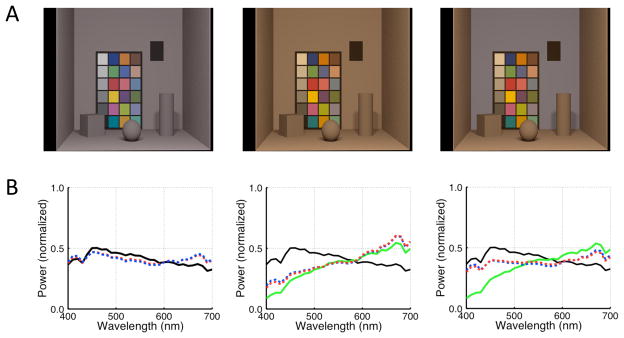Figure 5.
A) Three scenes studied by Delahunt & Brainard (2004). Subjects viewed renderings of the scenes in stereo and set the chromaticity of a test patch (location is indicated by black rectangle) to appear achromatic. Measurements were made for 17 scenes. Across some scenes, only the illuminant changed (e.g., left to center). Across other scenes, both the illuminant and the reflectance of the back surface changed (e.g., left to right). This latter manipulation eliminated local contrast as a cue to the illuminant change. B) The measured achromatic locus may be interpreted as the visual system’s estimate of the illuminant (Brainard et al., 2006). This is shown as a red dashed line in all three panels. The corresponding illuminant estimated by the Bayesian algorithm is shown as a blue dashed line in each panel. In the left panel, the scene illuminant is shown as a solid black line. This line is replotted in the middle and right panels for comparison. In those panels, the physical illuminant is shown as a solid green line. The Bayesian algorithm predicts the human equivalent illuminants well, both for cases of good constancy (e.g., left to center panel scene change) and for cases of poor constancy (e.g., left to right panel scene change).

